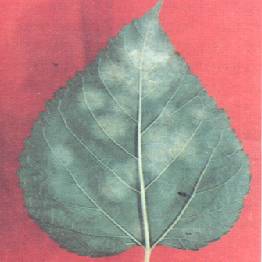DISEASES AND NEMATODES OF MULBERRY
Sl. No |
Disease |
Causal organism |
1 |
Leaf spot |
Cercospora moricola |
2 |
Powdery mildew |
Phyllactinia corylea |
3 |
Root rot |
Macrophomina phaseolina
Fusarium solani .oxysporum |
4 |
Root knot nematode |
Meloidogyne incognita |
1. Leaf spot
Symptoms
- Brownish circular or irregular leaf spots in the initial stage, enlarge, coalesce and form shot holes in later stage
- Severely affected leaves become yellowish and fall off prematurely
Management
- Spraying carbendazim @ 500-625 g/ha
2. Powdery mildew

Symptoms
- Initially, white powdery patches on lower surface of leaves are seen which later cover the entire leaf surface.
- Later turn black to brown in colour.
- Infected leaves turn yellow and fall off.
- High humidity (>70%) and low temperature (24-26oC) favour outbreak of the disease.
Management
- Providing wider spacing
- Growing resistant varieties like MR1, MR2 and China White
- Spraying Carbendazim @ 500-625 g/ha
- Releasing yellow lady bird beetles and white spotted lady bird beetles, since they feed on the mildew fungus.
3. Root rot
Symptoms
- Occurrence mostly seen in summer
- Initial stage, leaf blade turn to wilt and then spread to entire plant
- Later stage, black fungus are appear on branches and stem
- Spread through soil and water
Management
- Application of farm yard manure @20tonnes as basal
- At root surface pour copper oxy chloride( 2gm/lit of water)
- Prevent the spread of disease to other healthy plant by basin irrigation
- Uproot the died plants
- Application of Trichoderma viride @ 25gm/plant
- Application of Bacillus substilis @ 25gm/plant at the time of planting or pruning
4. Root knot nematode
Symptoms
- Growth and yield of plants affected.
- Stunted plants, marginal necrosis and yellowing of leaves, necrotic lesions on the root surface.
- Formation of characteristic knots or galls on the roots.
- Wilting of plants.
Management
- Deep ploughing in summer
- Applying neem cake @ 1000 kg/ha
- Applying Carbofuran 3G @ 30 kg/ha/year in four split doses
- (safe period is 50 days).
|


